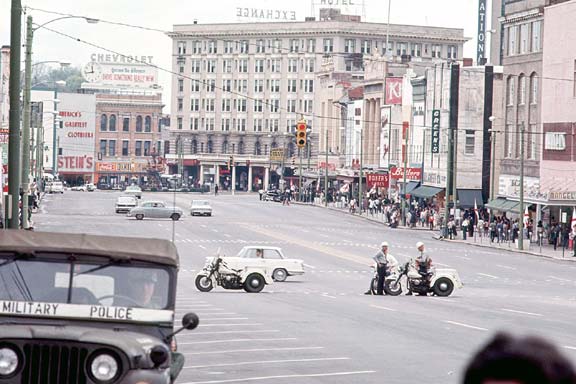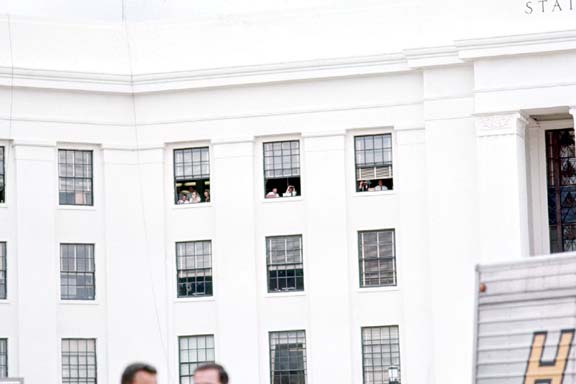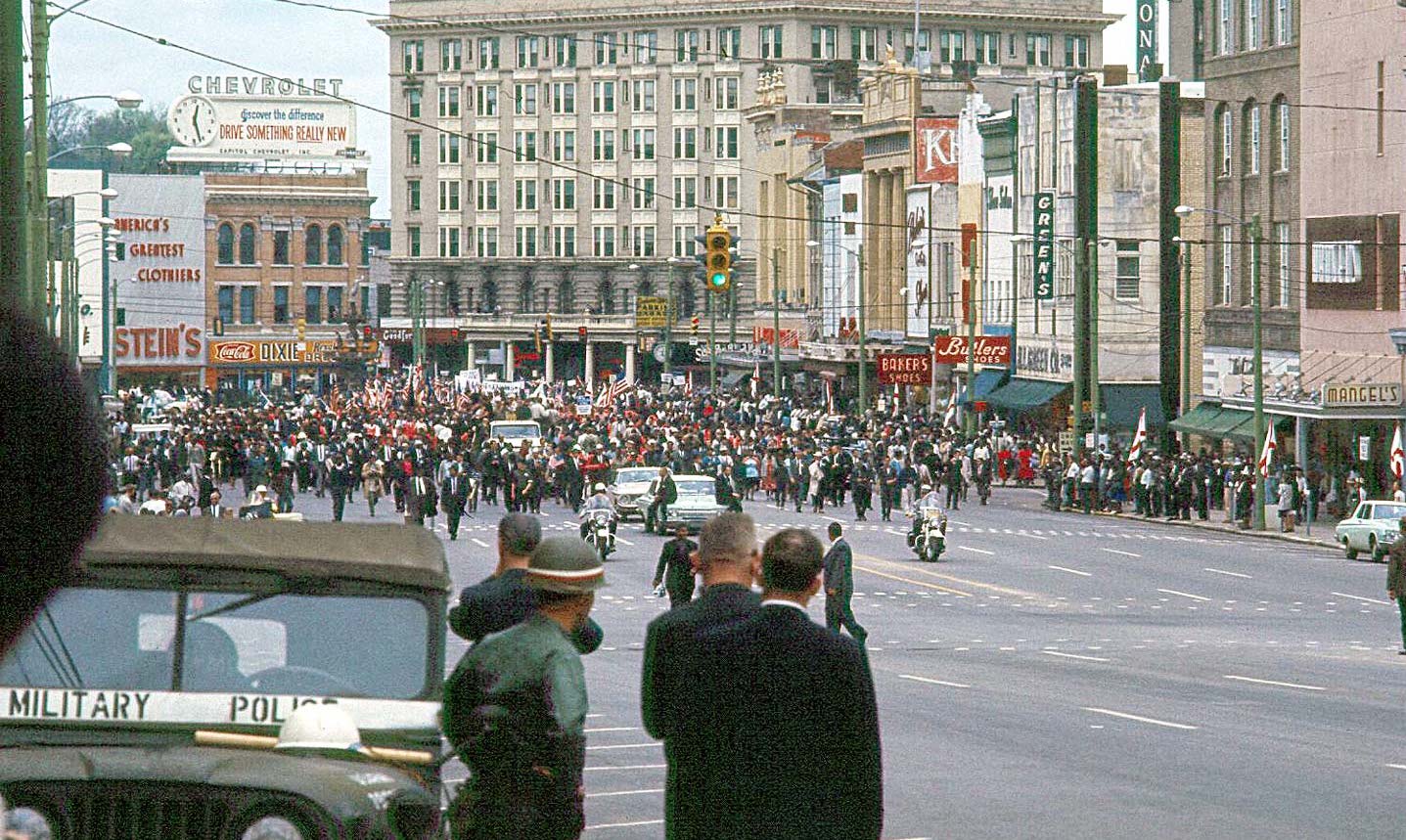Witnessing History
Peaceful Marchers Attacked by Police Outside Selma
Fred Stone was in college when he photographed the historic arrival of civil rights marchers in Montgomery, Alabama, in the spring of 1965. Now retired, he shared his photos with the California History Center at De Anza College. Historian David Howard-Pitney, a retired De Anza instructor, wrote the accompanying essay.

Motorcycle officers wait in Montgomery. (Fred Stone)

People watch from Capitol windows. (Fred Stone)
The Selma demonstrations that began on Jan. 2, 1965, were at first fairly quiet and uneventful. But starting in February, police attacks and other white violence against demonstrators became an increasing occurrence, attracting local and national media attention. A flashpoint came when an Alabama state trooper shot and killed an unarmed young protestor, Jimmie Lee Jackson. His unjustified killing outraged many demonstrators and ignited a mounting movement among them to march from Selma to the state Capitol at Montgomery, 54 miles away, confronting Gov. George Wallace with a protest over Jackson’s death and the denial of Black Alabamans’ voting rights.
On Sunday, March 7, marchers met on Selma’s outskirts to cross the Edmund Pettis Bridge and start the march to Montgomery. Refusing state troopers’ order to disperse, the voting rights activists held fast as troopers on foot and horseback moved forward, at first slowly. But within moments of the troopers contacting the front line of marchers, including SNCC Chairman (and eventual U.S. Congressman) John Lewis, all hell broke loose.
Police savagely beat demonstrators and cannisters of tear gas flew. Scores of people were injured, including Lewis, whose skull was fractured.
National TV news broadcast the violent police rout of the peaceful protestors. Widespread outrage over the brutality of “Bloody Sunday” led to a pronounced shift in national public opinion toward protecting the protestors and securing their goals. In a blitz of telegrams and press releases, Martin Luther King Jr. and the SCLC dramatically called for people of goodwill to “come to Selma” and join the demonstrators in their cause.
Within days hundreds of people arrived, many of them white clergy. One of the new Selma arrivals, a white Unitarian minister named James Reeb, 38, was attacked by white hoodlums and died within days.
This story is told in five parts:

